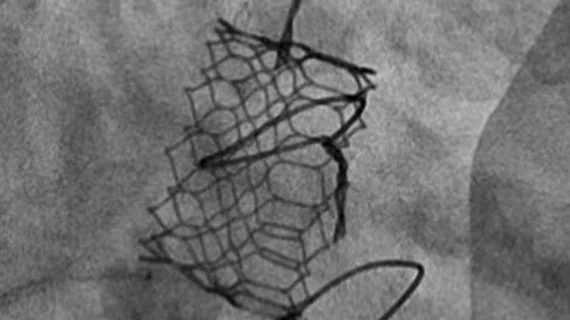Using a TAVR-like minimalist approach for valve-in-valve TMVR is safe and effective, Cleveland Clinic study confirms
Performing valve-in-valve transcatheter mitral valve replacement (ViV TMVR) with conscious sedation (CS) or monitored anesthesia care (MAC) instead of general anesthesia (GA) is safe and effective, according to new research published in JACC: Cardiovascular Interventions.
Such a strategy, known among cardiologists and cardiac surgeons as a “minimalist approach,” is already common during transcatheter aortic valve replacement (TAVR) procedures. It also replaces transesophageal echocardiography (TEE) with intracardiac echocardiography.
“Most operators currently perform ViV TMVR with patients under GA using TEE for guidance,” corresponding author Amar Krishnaswamy, MD, section head of invasive and interventional cardiology at Cleveland Clinic, said in a statement on the Cleveland Clinic website. “We believe a minimalist approach to anesthesia can be applied in this procedure, and we have begun doing so in almost all patients for a few years now. We reviewed our experience to date to assess the effects of this strategy on patient outcomes.”
The team’s study included 56 patients with a mean age of 75 years old. All patients underwent transfemoral ViV TMVR at the same facility from 2012 to 2020. While 14 procedures were performed under GA, the other 42 were performed under CS or MAC.
Overall, all procedures were successful, and there were no signs of paravalvular regurgitation. Also, no patients died within 30 days. Significant interatrial shunting requiring closure was seen in 12.5% of patients.
Krishnaswamy et al. found that a minimalist approach was linked to a shorter length of stay, writing that this helps elderly patients undergoing ViV TMVR “return to familiar surroundings” faster than if they had undergone GA. The shorter length of stay, they added, also helps hospitals use fewer resources and lowers overall healthcare costs.
Other 30-day and long-term outcomes were similar between the minimalist approach and GA approach.
Another key aspect of the team’s work is that 57.1% of ViV TMVR patients underwent high-pressure postdilation (HPPD)/surgical valve fracture. This same method is already seen in ViV TAVR procedures and appears to be effective for these mitral procedures as well.
In the same statement, Krishnaswamy noted that these findings come at a great time for specialists at Cleveland Clinic and elsewhere.
“We are seeing more and more patients for mitral valve-in-valve procedures each year,” he said. “In fact, in the past year we have performed almost two-thirds as many of these procedures as were included in this entire study, which ran through the end of 2020. This demonstrates the increasing relevance of the minimalist approach.”
The full Cleveland Clinic post detailing the work of Krishnaswamy et al. can be read here.

